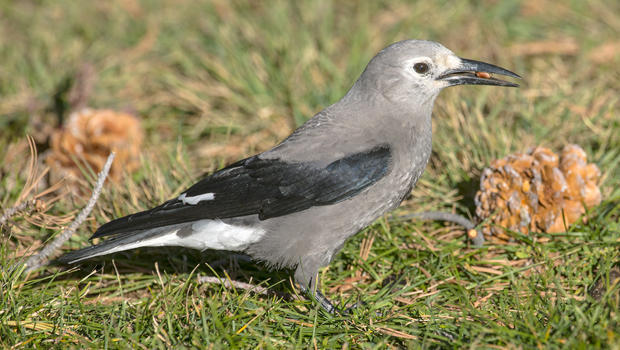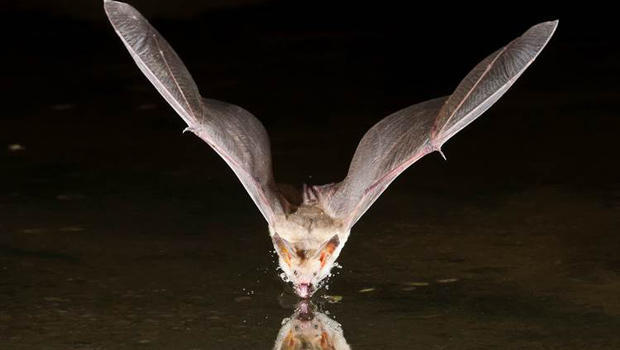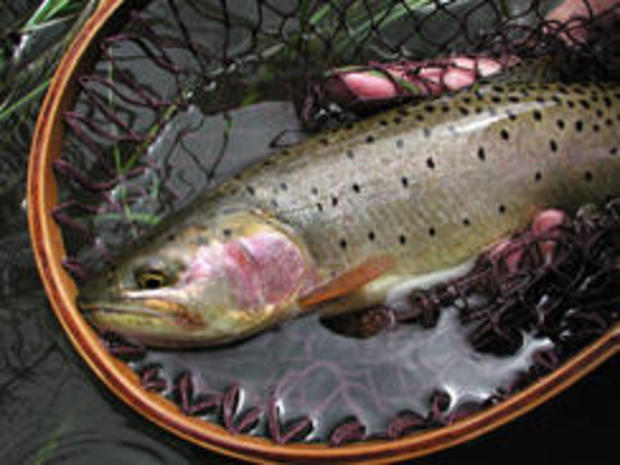Nature up close: Great Basin National Park
By “Sunday Morning” contributing videographer Judy Lehmberg.
The Great Basin includes most of Nevada, the western half of Utah, part of eastern California, and southeastern Oregon. It is named the “Great Basin” because none of the water within it drains out to either the Pacific Ocean or the Gulf of Mexico. All of the precipitation that falls on the Great Basin either soaks into the ground or evaporates, often leaving behind salt lakes, including the Great Salt Lake and California’s Mono Lake. Complete evaporation leaves salt pans like Utah’s Bonneville Salt Flats.
The Great Basin National Park, containing alpine species down to cold desert flora and fauna, is a sample of the larger Great Basin. It represents not one basin, but is comprised of more than 90 separate basins, largely dry deserts. The dryness is due to the rain shadow effect; California and Oregon mountain ranges uplift moist Pacific air, cooling and stripping moisture from it, so that on the other side of the mountains, descending cold, dry air becomes hot, dry air -- further drying the Great Basin like a hair dryer.
One of the best reasons to visit this lightly-visited national park is the feeling of wilderness a person experiences, the open space and solitude of hiking the trails, enjoying the wildlife.
Because there is a wide variety of elevation changes within the Great Basin -- from high deserts at 5,000 feet up to 13,000-foot peaks -- it has relatively high species diversity. The Great Basin National Park, in eastern Nevada, also exemplifies this large elevation change and high species diversity. It is a relatively young national park (established in 1986), but it is home to the oldest living non-clonal tree species on Earth, the bristlecone pine.
The incredibly hearty bristlecone pine is found just below tree line, between 5,600 and 11,200 feet, depending on latitude and local environmental conditions. Some specimens reach 5,000 years old or older -- the oldest organism on Earth. It grows in shallow, poor, dry soils. Because it can survive in poor soils and also extremely cold and windy conditions, it doesn’t have a lot of competition from other trees. Also, because of these factors it grows very slowly. Even its needles are hardy: while most pines keep their needles for only two to four years, the bristlecone pine’s needles can stay on for as long as 40 years.
At lower elevations in Great Basin National Park (usually between 4,500 and 7,500 feet), pinyon pines are common. The pinyon pine is an important source of food for wildlife as it produces seeds high in fats, proteins and vitamins. Pinyon pines, limber pines and to some extent bristlecone pines are sometimes referred to as bird pines, as birds are essential for dispersing their seeds.
One of those birds is the Clark’s nutcracker. The nutcracker can carry up to 90 pine seeds at a time and bury them for eating in the future. One Clark’s nutcracker can harvest up to 98,000 pine seeds each season. What is truly amazing is they can remember where they buried them. They invariably miss a few, though, and those are a source of new pine trees.
Scrub jays are another species important for dispersing pine seeds. They are generally found at the same altitude as pinyon pine so they eat a lot of them. When they have eaten their fill, they, like the Clark’s nutcracker, will cache them, often looking out for other watching jays before they do. They know other jays will steal their caches if they can.
There are a number of bat species in Great Basin National Park. One of the prettiest is the pallid bat. It eats insects and other arachnids, including centipedes and scorpions. Most insect-eating bats rely on echolocation to find their food, but pallid bats are unusual. Although they have excellent echolocation, they spend much of their time foraging on the ground. Their large ears are so sensitive they can actually hear their prey walking. They eat up to one-half their body weight every night.
Bighorn sheep were extirpated from what was to become Great Basin National Park before 1970, and reintroduced by the Nevada Department of Wildlife in 1979. Today there are only around 30 bighorn sheep in the park. Poor quality winter habitat, predation by mountain lions and, most importantly, interaction with domestic sheep are limiting their growth. Bighorns often die of pneumonia transmitted from domestic sheep.
One species of fish in the Great Basin National Park is the Bonneville cutthroat trout, the only salmonid native to the park. They were thought to be completely gone from the park until several small populations were discovered. Bonneville cutthroat trout, native to the tributaries of the Great Salt Lake, were isolated from the populations in Eastern Utah, and are now very restricted in range in the park, with the probability of global warming making many locations in the park too warm for their continued existence there.
Bonneville cutthroat once inhabited the Pleistocene-age Lake Bonneville, but since that lake dried to become the Great Salt Lake, the trout exist only in isolated populations. The Great Basin National Park cutthroat have been tested and are 100% pure Bonneville cutthroat trout.
Judy Lehmberg is a former college biology teacher who now shoots nature videos.
For more info:
- Judy Lehmberg (Official site)
- Judy Lehmberg’s YouTube Channel
To watch extended “Sunday Morning” Nature videos click here!






